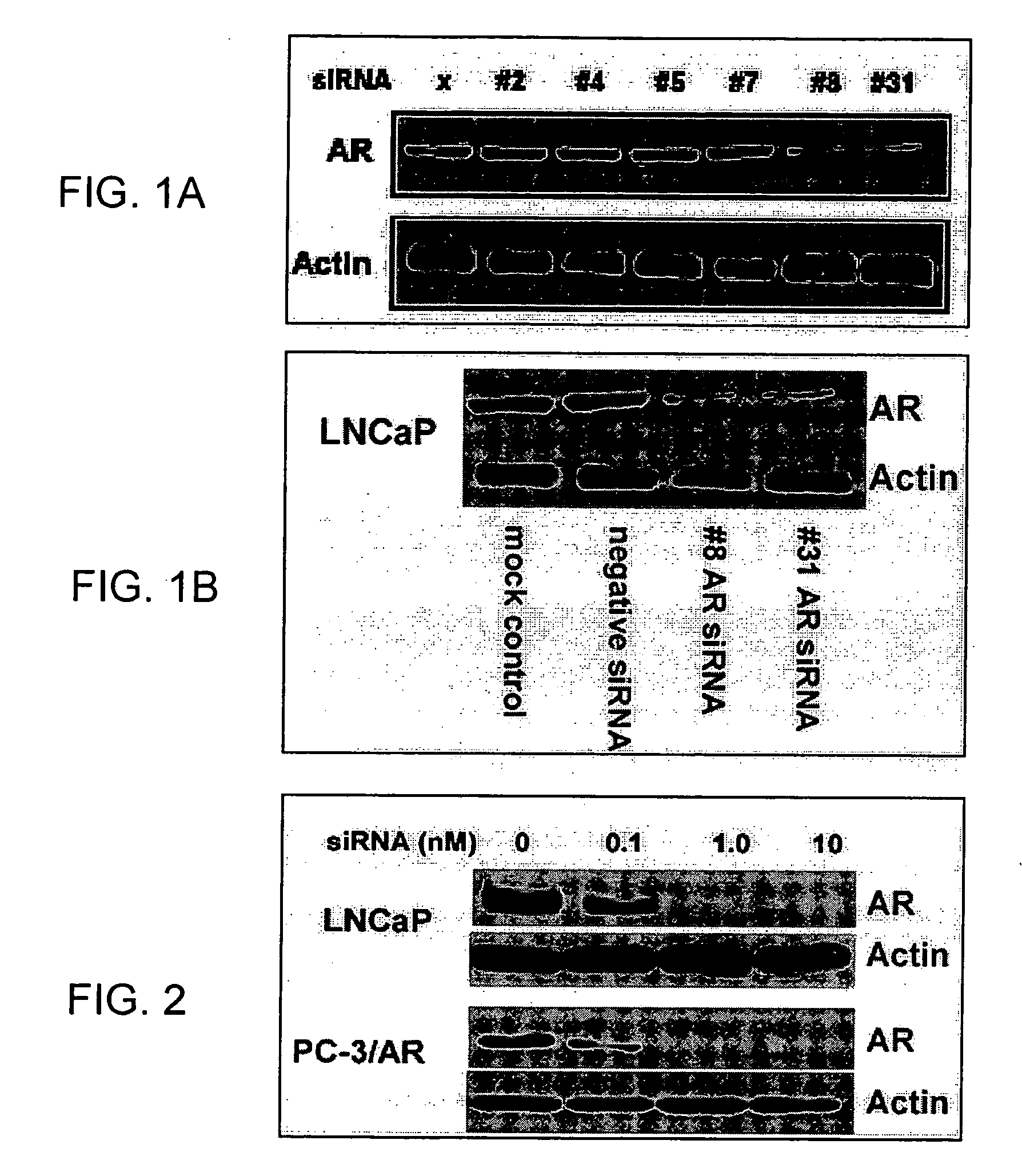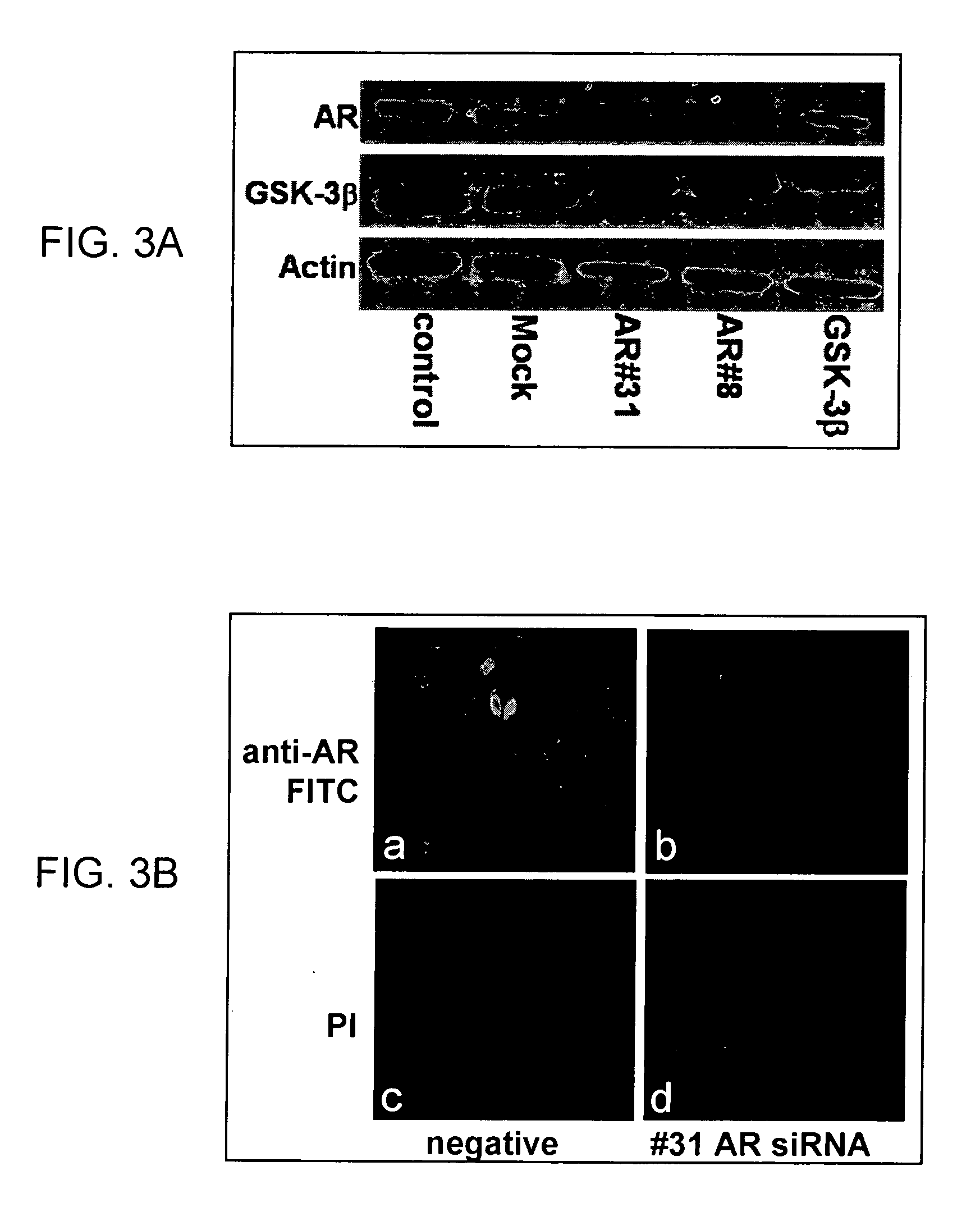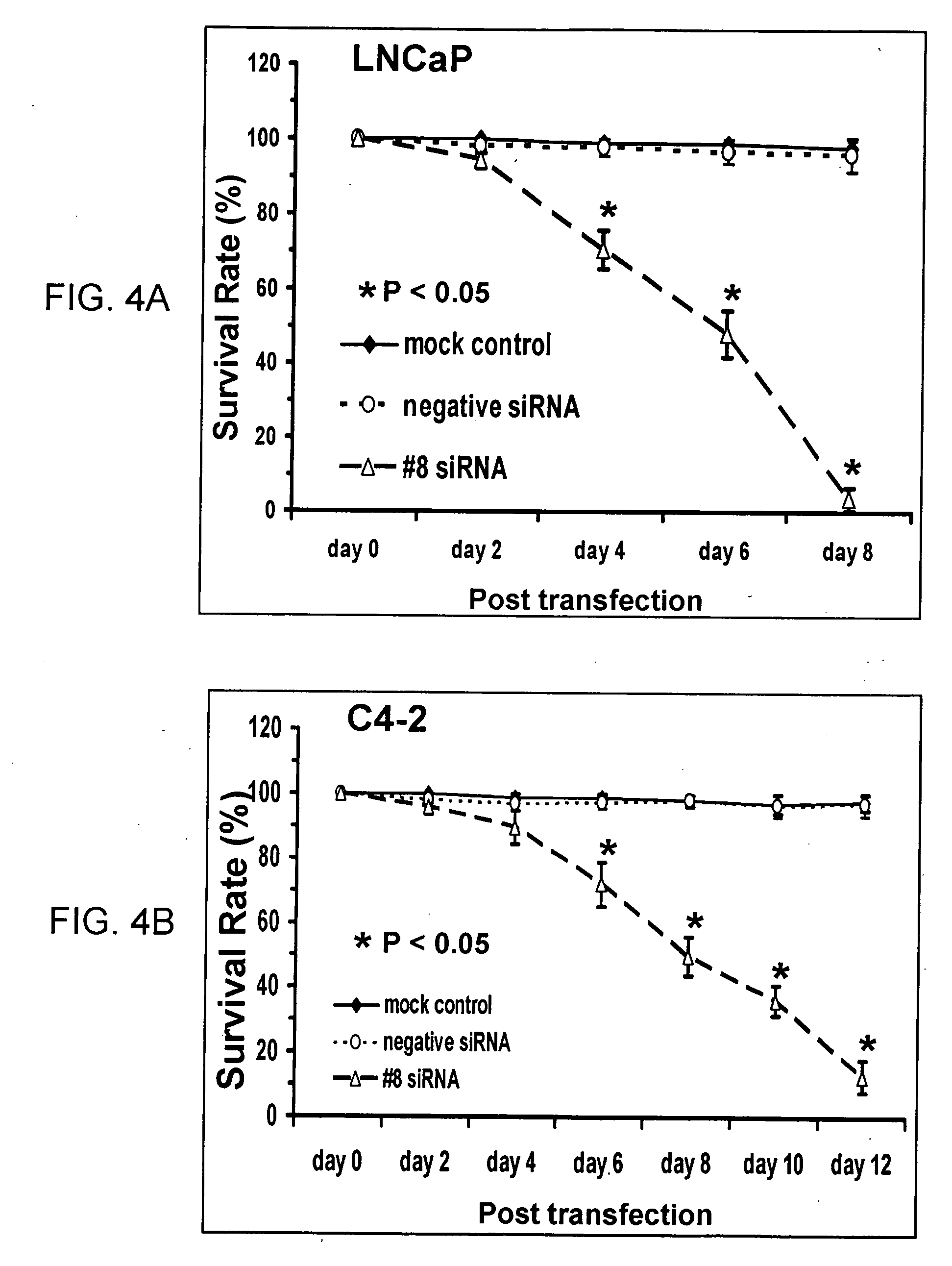Method for treating prostate cancer using siRNA duplex for androgen receptor
a prostate cancer and sirna duplex technology, applied in the direction of organic chemistry, viruses/bacteriophages, organic material ingredients, etc., can solve the problems of reducing the survival rate of ar, reducing the effect of androgen ablation, and reducing the risk of prostate cancer, so as to increase the activation of caspase-3 and increase the cleavage of poly (adp)-ribos
- Summary
- Abstract
- Description
- Claims
- Application Information
AI Technical Summary
Benefits of technology
Problems solved by technology
Method used
Image
Examples
example 1
Androgen Receptor Silencing via RNA Interference
[0088] In this example, it was shown that the androgen receptor can be silenced via RNA interference in both androgen-sensitive and androgen-insensitive cells. In a preliminary analysis of a panel of siRNAs against the AR gene, two potent siRNAs were identified in knocking down or inhibiting AR expression. As shown in FIG. 1A and FIG. 1B, both of the selected siRNAs (SEQ. ID NO. 8 and SEQ. ID NO. 31) significantly knocked down AR expression at a final concentration of 1.0 nM in culture media.
[0089] Next, three different doses of the AR siRNA having SEQ. ID NO. 31 were compared in both androgen-sensitive LNCaP and androgen-insensitive PC-3 / AR cells. The PC-3 cells were obtained from the ATCC, and the subline PC-3 / AR established by stable transfection of exogenous wild type AR. Actin blotting served as a loading control. As shown in FIG. 2, the AR siRNA having SEQ. ID NO. 31 reduced AR protein expression in both cell lines after 48 hou...
example 2
siRNA-Mediated AR Silencing Leads to Cell Death
[0090] The AR has been demonstrated to be important for cell proliferation in vitro (Zegarra-Moro 2002, Eder 2000) or tumor growth in vivo (Eder 2002) in prostate cancer. A recent report also showed a reduced cell proliferation after AR silencing by using the RNAi approach (Wright 2003). As discussed more fully below, the present invention showed for the first time that if androgen-sensitive LNCaP cells were kept in AR silencing condition for more than about 4-5 days, a significant cell death was induced in addition to cell arrest.
[0091] The effect of the siRNA transfection on cell survival of the cells was first evaluated. As a control, a siRNA against human glycogen synthase kinase 3β (“GSK-3β”) (Gene Bank #NM002093.2, SEQ. ID NO. 45 284-GAAUCGAGAGCUCCAGAUC-303 was used. The androgen-refractory cell line LNCaP-Rf (a kind gift from Dr. Donald Tindall, Mayo Clinic) was used in this example. LNCaP-Rf was established by long-term cultur...
example 3
AR siRNA-Induced Cell Death is Via an Apoptotic Pathway as Evidenced by Caspase Proteolysis, PARP Cleavage, and Release of Cytochrome c
[0100] It has been demonstrated that androgen ablation results in apoptotic cell death in prostate epithelium and prostate cancer cells (Kerr 1977, Denmeade 1996). In this example, the present invention investigated whether AR siRNA-induced cell death occurs via an apoptotic pathway.
[0101] To determine if AR silencing-induced cell death is an apoptotic response, the change of the membrane phospholipid phosphatidylserine (“PS”) which is translocated from the inner to the outer leaflet of the plasma membrane during apoptosis (Martin 1995) was first detected. As shown in FIG. 8A, by measuring the number of FITC-positive cells, it was determined that transfection of the LNCaP cells with the AR siRNAs of the present invention (SEQ. ID NO. 8 and SEQ. ID NO. 31) induced significant apoptotic cell death, while the control siRNA had no effect.
[0102] Since ...
PUM
| Property | Measurement | Unit |
|---|---|---|
| Sensitivity | aaaaa | aaaaa |
| Nucleic acid sequence | aaaaa | aaaaa |
| Antisense | aaaaa | aaaaa |
Abstract
Description
Claims
Application Information
 Login to View More
Login to View More - R&D
- Intellectual Property
- Life Sciences
- Materials
- Tech Scout
- Unparalleled Data Quality
- Higher Quality Content
- 60% Fewer Hallucinations
Browse by: Latest US Patents, China's latest patents, Technical Efficacy Thesaurus, Application Domain, Technology Topic, Popular Technical Reports.
© 2025 PatSnap. All rights reserved.Legal|Privacy policy|Modern Slavery Act Transparency Statement|Sitemap|About US| Contact US: help@patsnap.com



